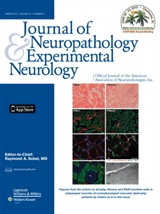 Oculopharyngeal muscular dystrophy (OPMD) is a late-onset autosomal dominant inherited dystrophy caused by an abnormal trinucleotide repeat expansion in the poly(A)-binding-protein-nuclear 1 (PABPN1) gene. Primary muscular targets of OPMD are the eyelid elevator and pharyngeal muscles, including the cricopharyngeal muscle (CPM), the progressive involution of which leads to ptosis and dysphagia, respectively. In this Franco-Italian study involving researchers from the Institute of Myology, the authors studied muscle biopsies from 14 OPMD patients, 3 inclusion body myositis patients, and 9 healthy controls to understand the consequences of PABPN1 polyalanine expansion in OPMD. In OPMD patient CPM (n = 6), there were typical dystrophic features with extensive endomysial fibrosis and marked atrophy of myosin heavy-chain IIa fibers. There were more PAX7-positive cells in all CPM versus other muscles (n = 5, control; n = 3, inclusion body myositis), and they were more numerous in OPMD CPM versus control normal CPM without any sign of muscle regeneration. Intranuclear inclusions were present in all OPMD muscles but unaffected OPMD patient muscles (i.e. sternocleidomastoid, quadriceps, or deltoid; n = 14) did not show evidence of fibrosis, atrophy, or increased PAX7-positive cell numbers. These results suggest that the specific involvement of CPM in OPMD might be caused by failure of the regenerative response with dysfunction of PAX7-positive cells and exacerbated fibrosis that does not correlate with the presence of PABPN1 inclusions.
Oculopharyngeal muscular dystrophy (OPMD) is a late-onset autosomal dominant inherited dystrophy caused by an abnormal trinucleotide repeat expansion in the poly(A)-binding-protein-nuclear 1 (PABPN1) gene. Primary muscular targets of OPMD are the eyelid elevator and pharyngeal muscles, including the cricopharyngeal muscle (CPM), the progressive involution of which leads to ptosis and dysphagia, respectively. In this Franco-Italian study involving researchers from the Institute of Myology, the authors studied muscle biopsies from 14 OPMD patients, 3 inclusion body myositis patients, and 9 healthy controls to understand the consequences of PABPN1 polyalanine expansion in OPMD. In OPMD patient CPM (n = 6), there were typical dystrophic features with extensive endomysial fibrosis and marked atrophy of myosin heavy-chain IIa fibers. There were more PAX7-positive cells in all CPM versus other muscles (n = 5, control; n = 3, inclusion body myositis), and they were more numerous in OPMD CPM versus control normal CPM without any sign of muscle regeneration. Intranuclear inclusions were present in all OPMD muscles but unaffected OPMD patient muscles (i.e. sternocleidomastoid, quadriceps, or deltoid; n = 14) did not show evidence of fibrosis, atrophy, or increased PAX7-positive cell numbers. These results suggest that the specific involvement of CPM in OPMD might be caused by failure of the regenerative response with dysfunction of PAX7-positive cells and exacerbated fibrosis that does not correlate with the presence of PABPN1 inclusions.
